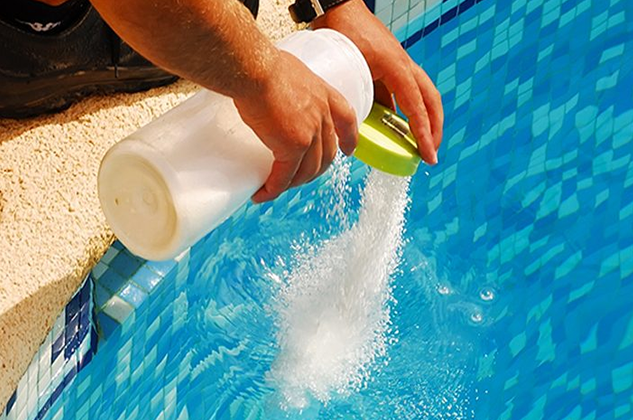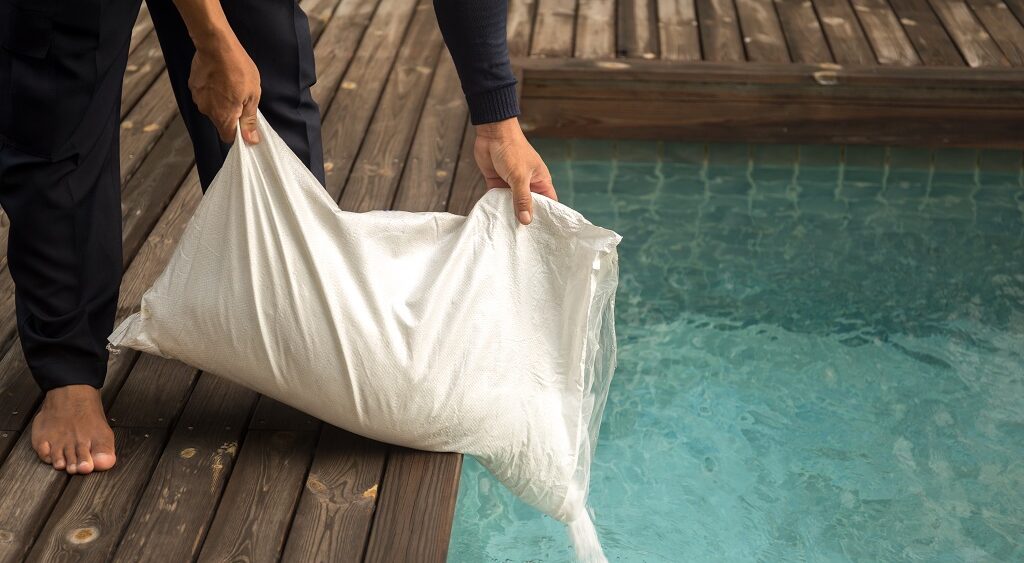Table of Contents
We are sure this question has popped up in your mind after you have purchased a salt-chlorine generator, and now you’re confused. Adding the right amount of salt to your pool is essential to maintain a safe level of chlorinated water in the pool.
It is very much advised to do the right research to avoid damaging the chlorinator machine. Thus, we are here to sort this out for you by figuring out exactly how much salt to add to the pool. Let’s start to help you out.
Amount of Salt You Require
The exact amount of salt required is specified by us between the range of 2500 to 3500 PPM (parts per million). The amount of salt requires highly on the size of the pool above ground level. So, this range will change depending upon the size of your pool. However, we have specified the ideal level of salt required.
It is important to know the size of your pool before deciding on the amount of salt you need. However, you don’t need to worry if you are not sure about the pool’s measurement. Next, we will discuss with you the method to calculate exact measurements.

Size of the Pool
To decide upon the salt amount, you need to first know the size of your pool. For calculating the size in gallons, you can multiply the area of the pool (A) with its average depth (AD).
Further, multiply the above by the number 7.48 to get your final product. Through this method, you will know the exact size of your pool.
G=A x AD x 7.48
However, you might still be unsure of the average depth of your pool. So, to know the average depth, take the sum of depth and shallow end of the pool and divide it by two. You can then, in the above formula, but the average depth is calculated here.
AD = (D + S)/ 2
Steps to Add Salt to the Pool
Measure Current Level of Salt
It is important to check the level of salt before adding further salt, as it can damage the pool. If you have a new pool, they don’t contain any amount of salt. But if you’re changing the standard chlorinator, it contains about 500 PPM salt. You can measure the salt level under a regular maintenance routine to have an accurate reading of the current salt level.
Turn Off Salt Chlorine Generator
You can first of all turn the generator off till the salt has fully dissolved. Also, keeping the pump turned off will ensure continuous cycling of water. This will speed the process of dissolving salt.
Add the Salt
You can evenly disperse the salt in the entire pool by first adding the salt to the pool’s shallow end. We don’t recommend pouring it into the skimmer directly. Then you can line up all the salt bags on the pool’s edge. Next, make a hole in the bag’s bottom for the salt to disperse by itself. Then wait for the salt to completely dissolve.
Sanity Level Test
Once the salt has completely dissolved in the pool, you can run the chlorinator for a sanity test. This ensures that the salt level is not too low to diminish the chlorinators’ efficiency or too high to lessen the salt chlorinators’ life-span.

Find Right Pool Salt
The sodium chloride salt should pass ninety-eight percent of purity level when you’re buying salt for the pool. Also, the salt, which is non-iodized and evaporated granulated, is preferred.
An important factor to keep in mind while buying pool salt is it shouldn’t be very thick. The finer the salt, the easier it is for it to dissolve in the pool. Also, if there is any undissolved salt, it might cause coloration of the pool’s lining and damage the water too. So, it is crucial to follow all these consideration to find the right pool salt.
Salt Water Pool Maintenance
Once you have completed the process of adding the required amount of salt to your salt, it is important to maintain it. We have listed a few things that should be followed for their efficient functioning.
1. Check Pool Chemistry
As important it is to keep the right level of pool salt, it is equally essential to check its various chemistry components. You should keep the PH levels and free chlorine under check through weekly tests. They can be tested by using a liquid kit for pool tests or test strips.
Also, if you notice algae or scaling issues in your pool, then a routine monthly check of the salt, calcium levels, and alkalinity is recommended. This ensures your pool is safe and healthy.
2. Keep Salt Cell under Check
The general salt generators come with an automatic indication when your generator requires a change of salt cells. However, if yours doesn’t show an alert, then it is essential to keep them under check regularly. In this case, we recommend keeping it under observation every three months. This ensures the best experience without damaging your salt generator.
3. Keep Filtration System Dirt-Free
It is very much needed to keep the filtration system clean with no accumulated debris in it. This is for ensuring a proper water flow to your pool. Thus, you can clean the filter and skimmer on a routine basis. Additionally, cleaning the filter is helpful to have unobstructed water flow.
Summing Up
It is very important to maintain the right salt level in your pool for the proper functioning of the chlorinated generator. By knowing the right size and following the above-mentioned factors that dominate the salt level, the process will become very easy for you.
Thus, we hope through this guide; you will be able to find the right amount of salt that should be added to the pool.
